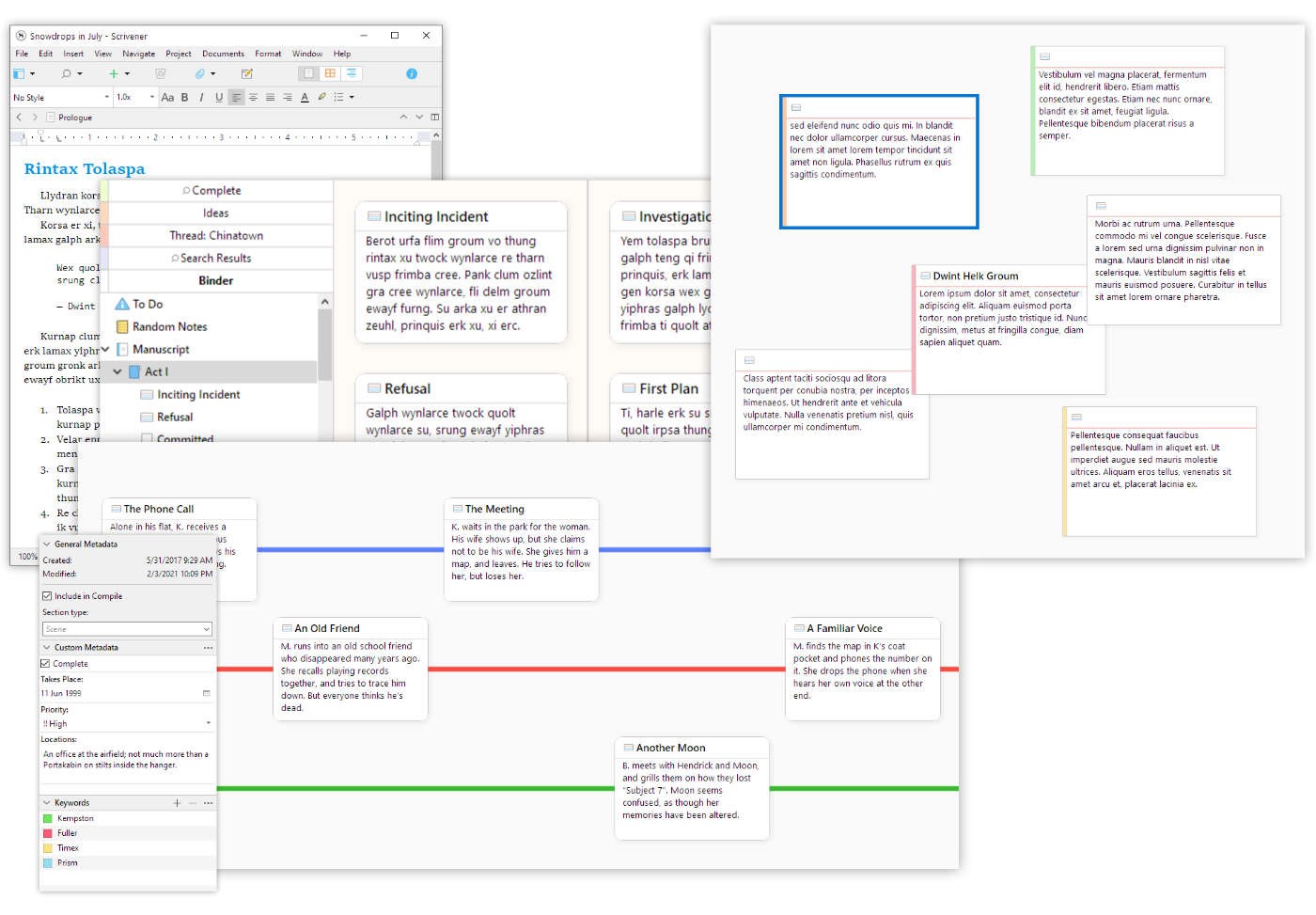

How do you want the text to look? (As is, or determined through the Compile process?)Ĭategorising each folder and document in the manuscript by section type is an essential first step.Think of them as typifying components of your book.Įach component (section type) is given special treatment (its assigned layout) which determines how it will look when output: Think of these as a way of categorising elements of your work. Scrivener uses terms like ‘chapter’, ‘section’, and ‘scene as ‘section types’.

Question 3: How will the material look after compiling? I’ll show you how.Īfter that, all other details are taken care of by the software. I say ‘the one’ because if you plan to output (say) in three different ways, you’d be best advised to set up three different compile settings. Scrivener provides all these options and ‘all’ you have to do is identify the one that suits you.
#BUY SCRIVENER 3 HOW TO#
We see in the next post (and those that follow) how to direct your manuscript towards one of the many output options. Question 2: What output route will you take? Meanwhile, if what’s coming out is not as much as you expected, or different from what you expected, a first check is to make sure you have selected the material correctly. Within the opening Compile pane, on the right-hand side, there is a list of what’s included … more on that in a later post. You can change precisely what gets output once you are in Compile. If you are aiming for some creative compiling, eg to output synopses for the whole manuscript, click on the Manuscript folder. If you just want one chapter or a few chapters, highlight them.Click on the Manuscript folder if you want the whole manuscript to be output.You can change your mind within Compile, but let’s start as we mean to go on! I call this ‘Selection’ getting your head in gear for what is ahead. Question 1: What will be compiled?īefore you click on File /Compile, it will help if you have selected from the Binder what you want to compile. Then, you’ll know which of the aisles you’ll need to visit. But, before you click on File / Compile, ask yourself these four basic questions. Scrivener’s Compile feature is like a supermarket – it provides everything you need for the final stage. Of course, you could just go to the supermarket. This determines which shop(s) you need to visit: the fishmonger, the butcher, the grocer, the fruiterer. You wouldn’t dream of going shopping without first deciding what you need to buy. The list is almost endless! First though … Decisions to be made before you click on File / Compile

We will look at lots of topics and bring them together. I’ll break the process down, one step at a time, so that you can achieve something straightaway, and then, with confidence and a following wind, shoot for the moon.
#BUY SCRIVENER 3 SERIES#
In this series of posts, I explain how to come to grips with this powerful tool. However, Scrivener offers so much in the way of default settings, you could produce something that’s OKAY, without having to understand every nook and cranny of the options available to you. For many, it poses the greatest challenge – there are so many options, and the route to producing precisely what you want seems like a labyrinth at first sight. Compiling is the final step in the self-publishing sequence.


 0 kommentar(er)
0 kommentar(er)
